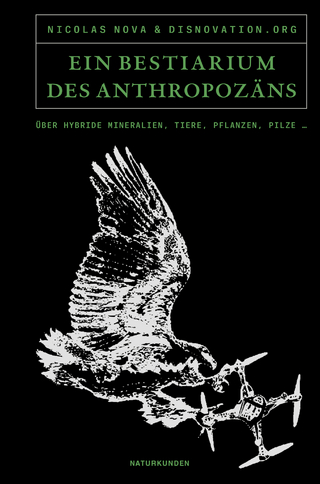
Protein Bioinformatics
Elsevier India (Verlag)
978-81-312-2297-3 (ISBN)
- Titel nicht im Sortiment
- Artikel merken
One of the most pressing tasks in biotechnology today is to unlock the function of each of the thousands of new genes identified every day. Scientists do this by analyzing and interpreting proteins, which are considered the task force of a gene. This single source reference covers all aspects of proteins, explaining fundamentals, synthesizing the latest literature, and demonstrating the most important bioinformatics tools available today for protein analysis, interpretation and prediction. Students and researchers of biotechnology, bioinformatics, proteomics, protein engineering, biophysics, computational biology, molecular modeling, and drug design will find this a ready reference for staying current and productive in this fast evolving interdisciplinary field.
Michael is a frequent invited speaker to local conferences and universities in India and tointernational conferences focused on bioinformatics, computational biology andmolecular biology. He maintains close connections with research and teachingcolleagues in India and contributes to international publications including handbooks,encyclopedias and journals. He began his research on Computational MolecularBiophysics in 1989, earning the PhD in BioPhysics from Bharathidasan University,India. He gained his first Post Doctoral experience on DNA bending and protein-DNAinteractions at International Center for Genetic Engineering and Biotechnology (ICGEB),Italy. He developed databases for proteins and computer simulation of protein-DNAinteractions during his subsequent postdoc at The Institute of Physical and ChemicalResearch (RIKEN), Japan. At AIST he continues to focus on various aspects of proteinbioinformatics.
1 Proteins
1.1 Building blocks
1.2 Hierarchical representation of proteins
1.3 Structural classification of proteins
1.4 Databases for protein sequences
1.5 Exercises
1.6 References
2. Protein Sequence Analysis
2.1 Sequence alignment
2.2 Programs for aligning protein sequences
2.3 Amino acid properties
2.4 Amphipathic character of a-helices and b-strands
2.5 Online tools for sequence analysis
2.6 Exercises
2.7 References
3 Protein Structure Analysis
3.1 Assignment of secondary structures
3.2 Computation of solvent accessibility
3.3 Representation of solvent accessibility
3.4 Residue-residue contacts
3.5 Amino acid clusters in protein structures
3.6 Contact potentials
3.7 Cation--p interactions in protein structures
3.8 Non canonical interactions
3.9 Free energy calculations
3.10 Amino acid properties derived from protein structural data
3.11 Parameters for proteins
3.12 Exercises
3.13 References
4. Protein Folding Kinetics
4.1 F value analysis
4.2 Experimental studies
4.3 Relationship between amino acid properties and F values
4.4 Hydrophobic clusters and long-range contact network in F value analysis
4.5 Kinetic database for proteins
4.6 Prediction of protein folding rates
4.7 Relationship between F values and folding rates
4.8 References
5. Protein Structure Prediction
5.1 Secondary structure
5.2 Protein structural class
5.3 Secondary structure content
5.4 Discrimination of transmembrane helical proteins and predicting their membrane spanning segments
5.5 Discrimination of transmembrane strand proteins
5.6 Identification of membrane spanning b -strand segments
5.7 Solvent accessibility
5.8 Inter-residue contact prediction
5.9 Protein tertiary structure prediction
5.10 Webservers for protein structure prediction
5.11 Exercises
5.12 References
6 Protein Stability
6.1 Determination of protein stability
6.2 Thermodynamic database for proteins and mutants
6.3 Relative contribution of non-covalent interactions to protein stability
6.4 Stability of thermophilic proteins
6.5 Analysis and Prediction of protein mutant stability
6.6 Exercises
6.7 References
7 Protein Interactions
7.1 Protein-protein interactions
7.2 Protein-DNA interactions
7.3 Protein-RNA interactions
7.4 Protein-ligand interactions
7.5 Exercises
7.6 References
Appendix A List of protein databases/webservers
| Erscheint lt. Verlag | 31.8.2010 |
|---|---|
| Verlagsort | New Delhi |
| Sprache | englisch |
| Maße | 191 x 235 mm |
| Gewicht | 730 g |
| Themenwelt | Medizin / Pharmazie |
| Naturwissenschaften ► Biologie ► Allgemeines / Lexika | |
| Naturwissenschaften ► Biologie ► Biochemie | |
| Naturwissenschaften ► Biologie ► Genetik / Molekularbiologie | |
| Technik ► Umwelttechnik / Biotechnologie | |
| ISBN-10 | 81-312-2297-7 / 8131222977 |
| ISBN-13 | 978-81-312-2297-3 / 9788131222973 |
| Zustand | Neuware |
| Haben Sie eine Frage zum Produkt? |
aus dem Bereich


